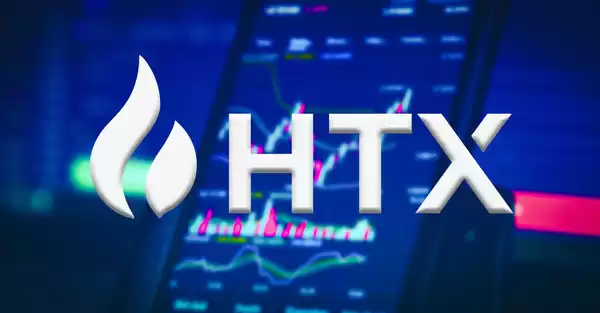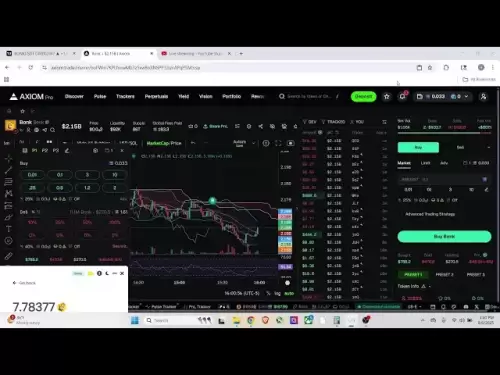-
 Bitcoin
Bitcoin $115100
1.27% -
 Ethereum
Ethereum $3675
2.71% -
 XRP
XRP $2.995
1.45% -
 Tether USDt
Tether USDt $1.000
0.02% -
 BNB
BNB $769.8
2.64% -
 Solana
Solana $168.0
3.25% -
 USDC
USDC $0.9999
-0.01% -
 TRON
TRON $0.3371
1.48% -
 Dogecoin
Dogecoin $0.2051
3.36% -
 Cardano
Cardano $0.7394
2.30% -
 Hyperliquid
Hyperliquid $38.15
0.42% -
 Stellar
Stellar $0.3966
-0.36% -
 Sui
Sui $3.486
2.93% -
 Chainlink
Chainlink $16.72
2.52% -
 Bitcoin Cash
Bitcoin Cash $568.0
4.36% -
 Hedera
Hedera $0.2440
2.59% -
 Ethena USDe
Ethena USDe $1.001
0.04% -
 Avalanche
Avalanche $22.16
2.06% -
 Litecoin
Litecoin $119.1
-0.73% -
 UNUS SED LEO
UNUS SED LEO $8.991
0.04% -
 Toncoin
Toncoin $3.232
-0.39% -
 Shiba Inu
Shiba Inu $0.00001233
2.82% -
 Uniswap
Uniswap $9.717
2.53% -
 Polkadot
Polkadot $3.664
1.85% -
 Dai
Dai $1.000
0.01% -
 Monero
Monero $281.2
-3.89% -
 Bitget Token
Bitget Token $4.350
1.55% -
 Cronos
Cronos $0.1428
5.07% -
 Pepe
Pepe $0.00001050
3.68% -
 Aave
Aave $262.3
3.54%
How to close Huobi leverage trading
Closing Huobi leverage trading positions involves identifying open positions, calculating potential outcomes, selecting a closure method, executing the order, and monitoring the completion.
Nov 11, 2024 at 05:44 am

How to Close Huobi Leverage Trading
Entering the world of leveraged trading in the cryptocurrency market necessitates a thorough comprehension of the risks and rewards involved. Huobi, a prominent cryptocurrency exchange, offers leverage trading that enables traders to amplify their trading capital. However, it's equally crucial to understand the process of closing leveraged trades effectively to minimize losses and protect your assets.
Step 1: Understand the Mechanics of Leverage Trading
Leverage trading involves borrowing funds from a broker or exchange to increase your trading capital. This allows you to control a position worth more than your available balance. It's essential to remember that while leverage can magnify profits, it also amplifies potential losses.
Step 2: Identify Your Open Positions
Determine the leveraged trades you wish to close. Huobi allows traders to view their open positions in the "Positions" or "Open Orders" section of their trading dashboard. Each position will have details about the asset being traded, leverage applied, and account balance.
Step 3: Calculate Potential Profit/Loss
Before closing a position, it's crucial to calculate your potential profit or loss. Leverage trading amplifies both gains and losses; ensuring a clear understanding of your financial exposure is vital. Refer to the position's details and determine the entry and exit prices to calculate the potential outcome.
Step 4: Select the Closure Method
Huobi provides various methods to close leveraged positions. You can manually enter a closing order through the trading interface or utilize the "Margin Call Close" feature. The "Margin Call Close" option enables the exchange to automatically liquidate your position if your account equity falls below a certain threshold.
Step 5: Execute the Closure
To manually close a leveraged position, simply enter a closing order in the trading interface. Indicate the asset, leverage applied, and the desired quantity to close. Alternatively, if your position is subject to a margin call, the exchange will execute the liquidation process, which may result in a forced closure and potential losses.
Step 6: Monitor the Closure
After submitting a closure order, track its progress through the "Order History" or "Trade History" sections. Ensure that the closure gets executed as intended and that the funds are returned to your trading account or spot wallet.
Additional Considerations:
- Risk Management: It's paramount to manage risk effectively when trading with leverage. Leverage can amplify both profits and losses, so always trade within your financial capabilities and implement appropriate risk mitigation strategies, such as stop-loss orders.
- Volatility: Cryptocurrency markets are known for their volatility, which can significantly impact leveraged positions. Always monitor market conditions and adjust leverage accordingly to minimize the potential impact of price fluctuations.
- Fees: Understand the fees associated with leveraged trading on Huobi. These fees may include trading commissions, maker/taker fees, and overnight financing charges. Factor these costs into your trading strategy to avoid surprises.
- Regulatory Compliance: Ensure compliance with relevant regulations in your jurisdiction before engaging in leverage trading. Some countries have restrictions or guidelines for leveraged trading, so it's crucial to stay informed and adhere to local laws.
Conclusion:
Closing leverage trading positions on Huobi requires a systematic approach. By following the steps outlined above, traders can effectively close their positions, minimize losses, and protect their assets. Remember to carefully assess the risks involved, monitor market conditions, and implement appropriate risk management strategies to optimize your leveraged trading experience on Huobi.
Disclaimer:info@kdj.com
The information provided is not trading advice. kdj.com does not assume any responsibility for any investments made based on the information provided in this article. Cryptocurrencies are highly volatile and it is highly recommended that you invest with caution after thorough research!
If you believe that the content used on this website infringes your copyright, please contact us immediately (info@kdj.com) and we will delete it promptly.
- BlockDAG, Litecoin, and Cardano: Charting the Course in Crypto's Dynamic Waters
- 2025-08-07 09:09:06
- Fireverse Token: Igniting a Musical Revolution in Web3
- 2025-08-07 08:27:45
- Ethereum, L2 Withdrawals, and Decentralization: A New Yorker's Take
- 2025-08-07 08:32:33
- Avalanche vs. Ruvi AI: Daily Sales Tell a Story of Crypto Disruption
- 2025-08-07 06:29:35
- DeSoc: The Crypto to Buy Now for a Decentralized Future (and Maybe 43x Gains!)
- 2025-08-07 06:50:16
- Arctic Pablo Coin: Riding the Meme Coin Wave with a Deflationary Twist
- 2025-08-07 07:18:13
Related knowledge

Why is my Bitstamp futures position being liquidated?
Jul 23,2025 at 11:08am
Understanding Futures Liquidation on BitstampFutures trading on Bitstamp involves borrowing funds to open leveraged positions, which amplifies both po...

How to report Bitstamp futures for taxes?
Jul 30,2025 at 08:35am
Understanding Bitstamp Futures and Taxable EventsWhen trading Bitstamp futures, it’s essential to recognize that these financial instruments are treat...

Does Bitstamp offer inverse contracts?
Jul 23,2025 at 01:28pm
Understanding Inverse Contracts in Cryptocurrency TradingIn the realm of cryptocurrency derivatives, inverse contracts are a specific type of futures ...

What is the difference between futures and perpetuals on Bitstamp?
Jul 27,2025 at 05:08am
Understanding Futures Contracts on BitstampFutures contracts on Bitstamp are financial derivatives that allow traders to speculate on the future price...

How to find your Bitstamp futures trade history?
Jul 23,2025 at 08:07am
Understanding Bitstamp and Futures Trading AvailabilityAs of the current state of Bitstamp’s service offerings, it is critical to clarify that Bitstam...

Can I use a trailing stop on Bitstamp futures?
Jul 23,2025 at 01:42pm
Understanding Trailing Stops in Cryptocurrency TradingA trailing stop is a dynamic type of stop-loss order that adjusts automatically as the price of ...

Why is my Bitstamp futures position being liquidated?
Jul 23,2025 at 11:08am
Understanding Futures Liquidation on BitstampFutures trading on Bitstamp involves borrowing funds to open leveraged positions, which amplifies both po...

How to report Bitstamp futures for taxes?
Jul 30,2025 at 08:35am
Understanding Bitstamp Futures and Taxable EventsWhen trading Bitstamp futures, it’s essential to recognize that these financial instruments are treat...

Does Bitstamp offer inverse contracts?
Jul 23,2025 at 01:28pm
Understanding Inverse Contracts in Cryptocurrency TradingIn the realm of cryptocurrency derivatives, inverse contracts are a specific type of futures ...

What is the difference between futures and perpetuals on Bitstamp?
Jul 27,2025 at 05:08am
Understanding Futures Contracts on BitstampFutures contracts on Bitstamp are financial derivatives that allow traders to speculate on the future price...

How to find your Bitstamp futures trade history?
Jul 23,2025 at 08:07am
Understanding Bitstamp and Futures Trading AvailabilityAs of the current state of Bitstamp’s service offerings, it is critical to clarify that Bitstam...

Can I use a trailing stop on Bitstamp futures?
Jul 23,2025 at 01:42pm
Understanding Trailing Stops in Cryptocurrency TradingA trailing stop is a dynamic type of stop-loss order that adjusts automatically as the price of ...
See all articles

























































































